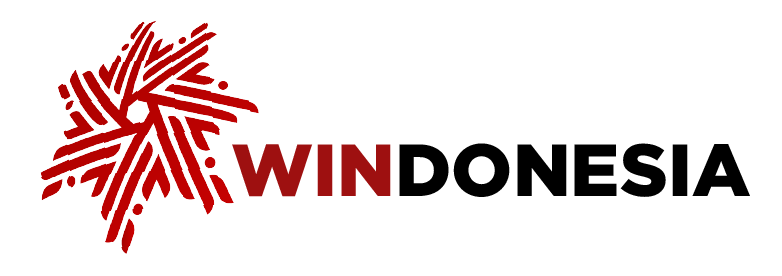Sector
Construction
As of 2022, Indonesia’s population stands at 275.8 million, a 1.17 percent growth from 272.7 million in 2021. With such a large population, Indonesia exhibits an exceptionally high demand for construction services. The total value of completed construction work in 2022 reached US$98.3 billion, with US$56.26 billion attributed to civil construction, US$32.87 billion to building construction, and the remaining US$9.17 billion to special construction work.
View moreConstruction
As of 2022, Indonesia’s population stands at 275.8 million, a 1.17 percent growth from 272.7 million in 2021. With such a large population, Indonesia exhibits an exceptionally high demand for construction services. The total value of completed construction work in 2022 reached US$98.3 billion, with US$56.26 billion attributed to civil construction, US$32.87 billion to building construction, and the remaining US$9.17 billion to special construction work.
Subsequently, Indonesia’s construction sector has experienced accelerated growth. In 2023, its gross domestic product (GDP) reached US$133.7 billion with an annual growth rate of 4.91 percent – more than double the rate of 2022, which stood at 2.01 percent. The sector’s stable growth in 2023 is further reflected on a quarter-basis; from Q2 to Q3, the construction sector grew by 5.87 percent, and from Q3 to Q4, it grew by 5.84 percent.
The prospects of the construction sector are on the rise as the price of construction materials stabilized around 2023 following the end of the pandemic. Notably, the price index for the construction of public facilities, buildings, roads, and bridges recorded a 0.17 deflation from November to December 2023, leading to a slight deflation of 0.08 percent on the price index for construction.
The construction sector has also been seeing increasing interest from foreign investors. Throughout 2023, total foreign direct investment (FDI) that flowed into the sector reached US$281.8 million, a significant increase compared to the total FDI of US$165.3 million that the sector absorbed in 2022.
Meanwhile, the total number of construction businesses has been decreasing slightly over the years from a total of 197,030 businesses in 2022 to 190,677 businesses in 2023. Considering the rapid growth of the sector, this decrease in construction businesses is attributed more to mergers and acquisitions rather than the businesses’ ceasing operations. Additionally, it is worth noting that in 2023, the total number of Construction Labor Certificates (SKK) and registered construction expertise certificates (SKA) reached 261,720 and 38,328, respectively.
Latest News
In a surprising turn of events to cap off the year, Nahdlatul Ulama (NU), Indonesia's largest Muslim organization, has been shaken by turmoil that many observers are calling an internal coup. At the center of the storm is the sudden political ousting of Yahya Cholil Staquf as chairman of NU’s executive body Tanfidziyah.
The catalyst for his removal was Yahya's invitation of Peter Berkowitz, an academic described by critics as having ties to an "international Zionist network", to an internal NU event in August. Yahya, who has a history of engagement with Israel, apologized for the invitation, but it was to no avail.
While Yahya has refused to yield his position, the Syuriah, the organization’s supreme council, moved unilaterally. In an official plenary session held in Jakarta on Dec. 9, the council named senior NU cleric Zulfa Mustofa as the group's acting chairman. The move carried significant political weight, evidenced by the attendance of high-profile government officials and senior NU members: Religious Affairs Minister Nasaruddin Umar, Social Affairs Minister Saifullah Yusuf and East Java Governor Khofifah Indar Parawansa.
At face value, the move against Yahya appears paradoxical. Since his election as chairman of PBNU’s Tanfidziyah in 2021, Yahya has been widely perceived as a staunch ally of the ruling government. Under his leadership, NU has taken pragmatic, some say controversial, steps to align with state policies. Most notably, this included accepting mining concessions under a government scheme allowing mass organizations to manage coal mines.
This concession was formalized through a controversial revision of the Mining Law earlier this year. The law was ratified in just three days without meaningful public or expert consultation, sparking significant backlash. Supporters framed the deal as a path to financial independence for NU, while critics viewed it as a moral compromise that tethered the religious organization too closely to extractive interests and state patronage.
That said, internal power struggles are not new to the current political climate. Late last year, when President Prabowo Subianto was still president-elect, the Indonesian Chamber of Commerce and Industry (Kadin) underwent a similar upheaval. Its then-chairman, Arsjad Rasjid, who had led rival candidate Ganjar Pranowo's campaign, was ousted in favor of the Prabowo-backed Anindya Bakrie. Arsjad initially contested the move as unconstitutional but eventually stepped aside after a compromise was reached.
However, the current NU debacle presents a crucial difference. The Kadin coup was a move against a political rival. Yahya, by contrast, has given no indication of opposing state authority. If Yahya is indeed aligned with the government, why has he become the target of an internal purge?
Observers point towards a proxy war between business factions. One faction within NU is believed to be close to Garibaldi ‘Boy' Thohir, a prominent coal magnate and brother of Youth and Sports Minister Erick Thohir. Another faction is linked to Hashim Djojohadikusumo, a key political financier and Prabowo's brother. Yahya has often been associated with figures close to Hashim, raising the question: why would a faction linked to the President's inner circle allow, or perhaps even orchestrate, his removal?
The contradictions deepen when considering the role of former vice president Ma'ruf Amin. A senior NU cleric, Ma'ruf has long been one of Yahya's most important allies. Yet, Yahya's replacement, Zulfa Mustofa, happens to be Ma'ruf's nephew. Zulfa claims he received his uncle's blessing to assume leadership.
This claim, however, clashes with the former vice president's public stance. Ma'ruf has openly rejected the manner of Zulfa's appointment, declaring Yahya's ousting illegitimate. He argues that under the group's constitution, a change in leadership cannot occur through a mere plenary session; it requires an Extraordinary Muktamar (Congress), reserved for emergency situations.
With NU now effectively split into dual leaderships, and Yahya continuing to assert his legitimacy, the organization is trapped in a stalemate marked by paradoxical power plays. Given the magnitude of the rift, it remains to be seen whether the Prabowo administration will intervene to resolve this quiet coup d'état.

